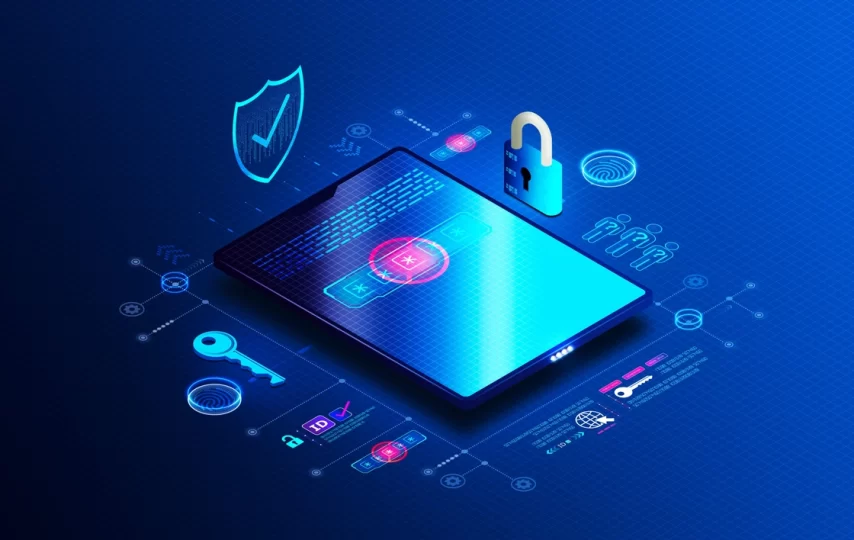In today’s digital world, security and convenience are often seen as opposites. On one hand, businesses want to ensure that their systems and data are protected from increasingly sophisticated cyber threats. On the other, users demand seamless, frictionless experiences. Striking the right balance can feel like a challenge. Enter passwordless multifactor authentication (MFA)—a solution that promises to maximize both security and user convenience.
In this post, we’ll explore how passwordless MFA works, the key benefits it offers, and how organizations can implement it to meet both security demands and user expectations.
What is Passwordless Multifactor Authentication?
At its core, passwordless MFA is an authentication method that verifies a user’s identity without requiring them to remember or enter a password. Instead, it uses a combination of biometrics, security tokens, or device-based authentication methods (such as a mobile phone) to authenticate the user.
The system still incorporates multifactor authentication principles—requiring two or more verification methods—but it eliminates passwords, which are often the weakest link in security protocols. By combining something the user has (a device or security token) with something they are (biometrics like fingerprint or facial recognition), passwordless MFA makes the login process more secure and user-friendly.
Why Passwords Are No Longer Enough
Traditional password-based security has become increasingly problematic. Here are a few key reasons why passwords are no longer sufficient:
- Weak Passwords: Despite recommendations, many users still rely on easily guessable passwords. Using names, birthdates, or simple sequences (like “123456”) compromises security.
- Password Fatigue: As the number of online accounts grows, users struggle to remember passwords for all of them. This leads to risky behaviors like reusing passwords across multiple platforms.
- Phishing Attacks: Hackers continue to target passwords through phishing schemes, tricking users into providing their login credentials.
- Credential Theft: Data breaches frequently expose millions of passwords, giving cybercriminals easy access to multiple accounts.
With these challenges in mind, passwordless MFA is rapidly emerging as a more robust solution.
Benefits of Passwordless Multifactor Authentication
1. Enhanced Security
Eliminating passwords from the equation significantly reduces the risk of password-related attacks. Since there’s no password to steal, phish, or guess, hackers are left without a key entry point. Passwordless MFA relies on factors that are much harder for attackers to replicate, such as biometrics or encrypted hardware tokens.
For organizations, this means fewer incidents of compromised accounts, data breaches, and phishing attacks, ultimately leading to improved data security and compliance.
2. Improved User Experience
One of the major pain points for users is password management—especially when companies enforce strict requirements, like frequent password changes and complex character combinations. Passwordless MFA offers a far more seamless experience. Users no longer need to remember and manage multiple passwords across platforms.
By using biometrics or one-click authentication methods (such as a push notification to their mobile device), users can log in quickly and securely. This not only reduces frustration but also improves productivity by minimizing login delays.
3. Reduced IT Burden
Password resets are one of the most common tasks for IT help desks, consuming valuable time and resources. With passwordless MFA, businesses can reduce the volume of help desk tickets related to password recovery, freeing up IT teams to focus on more critical tasks. This is especially beneficial for larger organizations with thousands of users.
4. Compliance with Security Standards
Many industries are governed by strict security standards and regulations, such as GDPR, HIPAA, or PCI-DSS. Implementing passwordless multifactor authentication can help organizations stay compliant with these regulations by offering a stronger form of identity verification. In turn, this reduces the risk of non-compliance fines and penalties.
How to Implement Passwordless MFA
Adopting passwordless multifactor authentication doesn’t have to be a complex process. Here are a few practical steps to get started:
1. Choose the Right Authentication Methods
Passwordless MFA offers a variety of authentication methods, so it’s important to choose the right one for your organization’s needs. Some common options include:
- Biometrics: Using fingerprint scanning, facial recognition, or voice recognition to verify identity.
- Security Keys: Physical tokens or USB-based devices that authenticate the user.
- Mobile Authentication: Push notifications or SMS verification codes sent to a registered device.
When selecting a method, consider your user base and the devices they commonly use. For instance, mobile-based authentication may be ideal for a workforce that relies on smartphones, while biometrics might be a good fit for industries that require high levels of security.
2. Educate Users and Encourage Adoption
For passwordless MFA to be effective, users need to understand the benefits and feel comfortable using the new system. Educating users through training sessions, FAQs, and support materials will help ease the transition. Encourage adoption by highlighting how the solution improves their security and eliminates the frustration of password management.
3. Integrate with Existing Systems
When implementing passwordless MFA, it’s essential to ensure compatibility with your current IT infrastructure. Many passwordless solutions offer easy integration with popular platforms, such as Microsoft Azure, Google Workspace, and Okta. Before rolling out the system organization-wide, perform thorough testing to identify any potential integration issues.
Conclusion
Passwordless multifactor authentication is not just a trend—it’s a necessary evolution in securing digital identities while offering users a more convenient experience. By eliminating the vulnerabilities associated with passwords and using stronger, multifactor methods of authentication, businesses can better protect themselves from cyber threats and improve user satisfaction.
As you consider implementing passwordless MFA, remember to prioritize a solution that fits your organization’s unique needs and is user-friendly. With the right approach, you can create a security strategy that both maximizes protection and keeps users happy—a win-win for everyone.
Thank you for considering this advanced authentication approach. Should you have any questions or need assistance with the implementation process, we are here to help and eager to build a more secure future together.







